 Your new post is loading...
 Your new post is loading...

|
Scooped by
Gust MEES
January 12, 2017 9:09 AM
|
Lange Zeit war der Nutzen des Blinddarms unklar. Forscher der Duke University in Durham entdeckten nun jedoch eine wichtige Funktion des dubiosen Organs: Im Falle einer Darmerkrankung werden dort nützliche Darmbakterien gelagert, um sie vor dem Ausschwemmen zu schützen. Ist die Krankheit vorüber, können die Darmbakterien wieder in den Dickdarm zurückkehren und die Genesung vorantreiben. Learn more / En savoir plus / Mehr erfahren: http://www.scoop.it/t/21st-century-innovative-technologies-and-developments/?tag=Medicine

|
Scooped by
Gust MEES
November 1, 2016 2:07 PM
|
Towards this end, researchers at MIT are investigating ways of making artificial neural networks more transparent in their decision-making. As they stand now, artificial neural networks are a wonderful tool for discerning patterns and making predictions. But they also have the drawback of not being terribly transparent. The beauty of an artificial neural network is its ability to sift through heaps of data and find structure within the noise. This is not dissimilar from the way we might look up at clouds and see faces amidst their patterns. And just as we might have trouble explaining to someone why a face jumped out at us from the wispy trails of a cirrus cloud formation, artificial neural networks are not explicitly designed to reveal what particular elements of the data prompted them to decide a certain pattern was at work and make predictions based upon it. Learn more / En savoir plus / Mehr erfahren: http://www.scoop.it/t/21st-century-innovative-technologies-and-developments/?tag=AI

|
Scooped by
Gust MEES
September 25, 2016 12:26 PM
|

|
Scooped by
Gust MEES
September 24, 2016 6:00 PM
|
Snap Inc., the Snapchat-maker's new name, hasn't said exactly when Spectacles will go on sale but we know they will be priced at $129.99.
While that's still a decent chunk of change, as far as wearables go, it's pretty reasonable. It's less than many wrist-worn wearables like Fitbit's $149.95 Charge 2 tracker, and significantly cheaper than other glasses products. When Google Glass launched in 2013, it cost $1,500.
Granted, Spectacles isn't an augmented reality product, as many thought it might be, and the fact that it's primarily a camera helps keep the cost down. But, with wireless charging along with Wi-FI and Bluetooth connectivity, it's not exactly light on features either.
The right price point could make all the difference for Snap Inc., which is just starting to branch out into products beyond its flagship app. Given that the app is most popular among young users, making Spectacles too expensive could prove to be disastrous for the company.
And while it's still too early to tell if Spectacles will be a success for the company, at least we know the cost won't be holding many people back. Learn more / En savoir plus / Mehr erfahren: http://www.scoop.it/t/21st-century-innovative-technologies-and-developments/?tag=Snapchat http://www.scoop.it/t/21st-century-innovative-technologies-and-developments/?tag=Privacy https://gustmees.wordpress.com/2013/12/21/privacy-in-the-digital-world-shouldnt-we-talk-about-it/

|
Scooped by
Gust MEES
September 22, 2016 3:52 PM
|

|
Scooped by
Gust MEES
April 28, 2016 12:08 PM
|
Microsoft has partnered with a San Francisco-based company to encode information on synthetic DNA to test its potential as a new medium for data storage.
Twist Bioscience will provide Microsoft with 10 million DNA strands for the purpose of encoding digital data. In other words, Microsoft is trying to figure out how the same molecules that make up humans' genetic code can be used to encode digital information.
While a commercial product is still years away, initial tests have shown that it's possible to encode and recover 100 percent of digital data from synthetic DNA, said Doug Carmean, a Microsoft partner architect, in a statement.
Using DNA could allow massive amounts of data to be stored in a tiny physical footprint. Twist claims a gram of DNA could store almost a trillion gigabytes of data.
Finding new ways to store information is increasingly important as people generate more and more data in their daily lives, and as millions of connected IoT sensors start to come online.

|
Scooped by
Gust MEES
January 7, 2016 6:42 PM
|
According to a report by the Wall Street Journal, Apple has acquired Emotient, an artificial intelligence startup. The company confirmed the move to the WSJ.
The San Diego-based company was founded in 2012 and has raised $8M from investors like Intel Capital and Seth Neiman, and had been tinkering around with products like Google Glass and other wearables. Most recently the company was working with advertisers on how to bake in reaction analysis into their advertising according to the WSJ.
|

|
Scooped by
Gust MEES
December 3, 2016 10:44 AM
|
The tech world, Burger explained, was moving into a new orbit. In the future, a few giant Internet companies would operate a few giant Internet services so complex and so different from what came before that these companies would have to build a whole new architecture to run them. They would create not just the software driving these services, but the hardware, including servers and networking gear. Project Catapult would equip all of Microsoft’s servers—millions of them—with specialized chips that the company could reprogram for particular tasks.

|
Scooped by
Gust MEES
October 5, 2016 11:17 AM
|
GOOGLE HAS LAUNCHED Daydream View, a fabric-coated virtual reality (VR) headset that's the first to support the firm's Daydream platform.
The odd-looking facemask, which has probably been designed to match your sofa seeing as you're not going to leave it once you have one, requires a Daydream-compatible smartphone to function, which is handy as Google has just launched the Nougat-powered Pixel and Pixel XL with Daydream support.
The View is 30 per cent lighter than other smartphone-powered VR headsets, according to the firm, and is easier to use. The handset automatically switches to VR mode when the latch is opened and the phone is inserted.
Once you've strapped the Daydream View to your face, you can navigate around Google's Daydream platform, which offers content from the likes of The New York Times, CNN, IMAX and developers Electronic Arts and Ubisoft, which you'll find at the firm's Oculus-style VR marketplace.
Daydream View, which follows the success of the firm's Cardboard viewer, also come with a Wii-style handheld controller for more immersive experiences, which fits inside the headset so you don't lose it.

|
Scooped by
Gust MEES
September 24, 2016 7:00 PM
|
Snapchat is the only company cool enough to possibly dismantle the Google Glass stigma. Awkward, useless, and a threat to privacy are how many think of computers you wear on your face. Can Snapchat show off the masterful marketing and smooth execution required to produce a product that won’t die on stores shelves or in a desk drawer?
To quickly recount the basics, a video of Snapchat’s new camcorder sunglasses leaked last night. Business Insider reported it, so the company rushed out the news with a Wall Street Journal piece that was planned for Monday.
Snapchat is renaming its corporate self to Snap Inc, and launching its $130 Spectacles this fall in limited release. They’ll be one-size-fits all in black, teal, or coral colors. Spectacles let you tap the glasses’ rim to instantly record 10 seconds of video, three taps to record a maximum of 30 seconds, with a light on the front alerting people you’re recording.
The video is captured with an 115-degree wide view lens in a circular format that can be watched full-screen on a phone in any orientation. The video is stored on the device and can be wirelessly offloaded to a phone over Wifi or Bluetooth so users can edit and share via Snapchat later. Spectacles’ battery should last a day, and you can get up to four full recharges from the portable charging case.

|
Scooped by
Gust MEES
September 24, 2016 5:34 PM
|
It seems like it was ages ago that Google Glass was the future that nobody wanted. The wearable tech had at least one bad design flaw—it seemed to get its early adopters punched in the face because people didn’t like the camera being pointed at them. Now, Snapchat thinks people are finally ready for glasses-mounted personal recording devices.
Snapchat is betting that it wasn’t so much the fear of being assaulted that killed Google Glass; it’s just that people didn’t want to pay $1500 for the privilege. The millennial-approved social network is jumping into the hardware game with its $130 “Spectacles.” Rather than trying to do everything a smartphone can, the frames will simply focus on looking “stylish” and recording 10-second bursts of circular video.
The glasses feature a fish-eye lens that captures videos at an 115-degree angle, which is closer to the eyes’ natural field of view. The user taps a button on the hinge, a ring of lights indicate to strangers that they are being filmed and a short clip is recorded. (Good luck with that.) The footage is then automatically pushed to Snapchat memories.

|
Scooped by
Gust MEES
May 28, 2016 4:25 PM
|
Der Gole 1 soll nach Angaben des Herstellers der weltweit kleinste All-in-one-PC mit Touchscreen und Windows 10 sein: Das gerade einmal knapp 14 Zentimeter breite, 9 Zentimeter hohe und 2 Zentimeter tiefe Gerät wiegt nur 200 Gramm und ist dennoch ein vollständiger Windows-Rechner.
Dual-Boot: Der Hosentaschen-Rechner läuft mit Windows 10 und Android 5.1.
(Quelle: indiegogo.com) Je nach Ausstattung soll der Mini-PC rund 70 oder 90 Euro kosten. Die Modelle unterscheiden sich beim Arbeitsspeicher und Flash-Speicher. Beim Betriebssystem setzt der Mini-PC auf Dual-Boot: Neben Windows 10 Home läuft auf dem Rechner auch Android 5.1. Für den Wechsel von Windows auf Android soll ein Klick auf ein Desktop-Symbol ausreichen. Learn more / En savoir plus / Mehr erfahren: http://www.scoop.it/t/21st-century-learning-and-teaching/?tag=OLPC

|
Scooped by
Gust MEES
March 29, 2016 1:22 PM
|
Quantum computing is now within closer reach thanks to a major breakthrough in which scientists have demonstrated that a key building block can be assembled.
Quantum computers are based on atomic-scale quantum bits, or qubits, that can represent both 0 and 1 simultaneously, and they are expected to deliver huge performance gains over traditional computers. Realizing that potential, however, depends on the ability to build working quantum circuits.
That's where the Fredkin gate, also known as a controlled-SWAP gate, comes in. The quantum version of the classic Fredkin gate exchanges two qubits depending on the value of the third. It could be a key component of quantum circuitry, but because of the complexity involved, no one has ever managed to build one in the real world -- until now.
Whereas the Fredkin gate typically requires a circuit of five logic operations, researchers from Griffith University and the University of Queensland used the quantum entanglement of particles of light to implement the controlled-SWAP operation directly.
“Similar to building a huge wall out of lots of small bricks, large quantum circuits require very many logic gates to function," explained Raj Patel, a research fellow in Griffith's Center for Quantum Dynamics. "However, if larger bricks are used, the same wall could be built with far fewer bricks.” Learn more / En savoir plus / Mehr erfahren: http://www.scoop.it/t/21st-century-innovative-technologies-and-developments/?tag=Quantum-Computing
|



 Your new post is loading...
Your new post is loading...





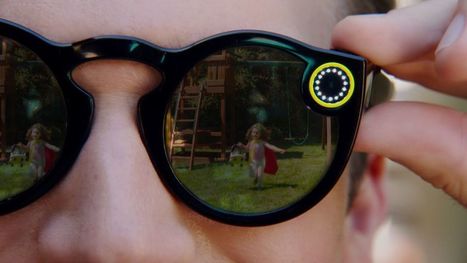
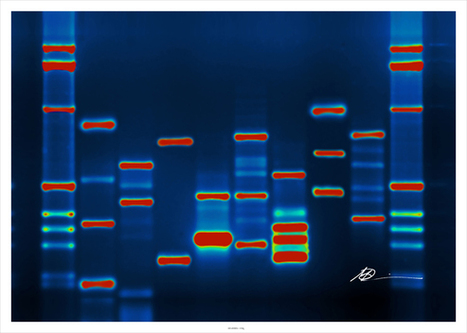

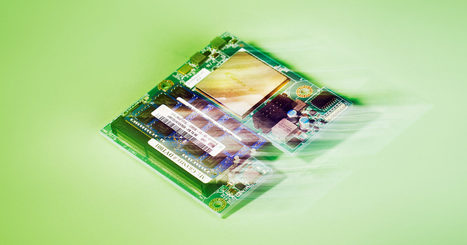
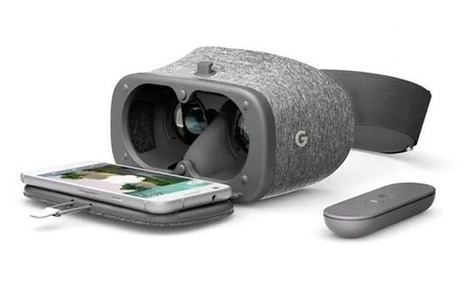



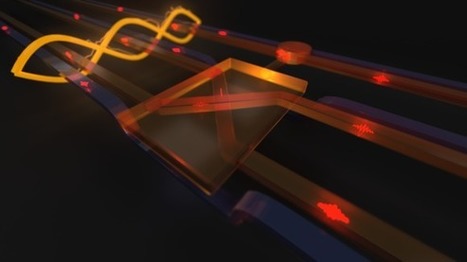






Learn more / En savoir plus / Mehr erfahren:
http://www.scoop.it/t/21st-century-innovative-technologies-and-developments/?tag=Medicine